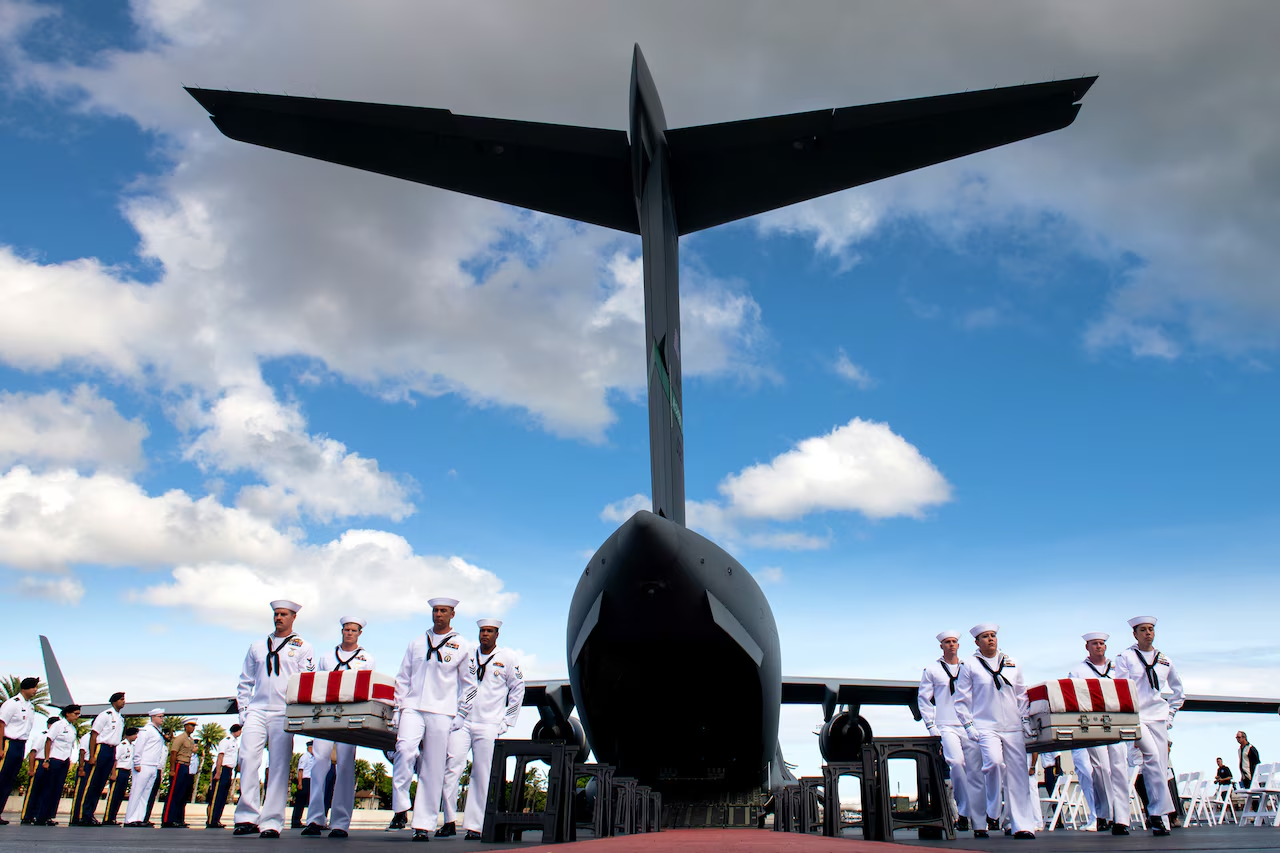Editor’s note: Several Alabamians were killed while serving on board the USS Oklahoma when it was attacked at Pearl Harbor on Dec. 7, 1941, including Julius Ellsberry, a Birmingham native who was the first African American and Alabamian to die in World War II. Others lost that day included:
| Navy Chief Warrant Officer | John A. Austin | 36 | Warrior, Alabama |
| Fireman 2nd Class | Ralph C. Battles | 25 | Boaz, Alabama |
| Water Tender 2nd Class | Edgar D. Gross | 39 | Athens, Alabama |
| Mess Attendant 1st Class | Johnnie C. Laurie | 25 | Bessemer, Alabama |
| Water Tender 1st Class | Walter H. Sollie | 37 | Myrtlewood, Alabama |
By David Vergun
DOD News
The battleship USS Oklahoma disinterment and identification project at the Defense POW/MIA Accounting Agency has succeeded in accounting for all unaccounted-for personnel from the USS Oklahoma lost on the morning of Dec. 7, 1941.
That morning, a fleet of Japanese carriers launched formations of dive bombers, torpedo planes and fighters against Navy vessels moored at Pearl Harbor, Hawaii.
The Oklahoma was torpedoed just before 8 a.m.
Eight more torpedoes soon followed, ripping open the hull of the battleship, causing it to list and eventually capsize just 12 minutes after the first one hit.
Because the ship turned over so quickly, many of the crew were trapped inside. Thirty-two were rescued, but 415 sailors and 14 Marines perished.
Only 35 of the 429 crew members who died were identified in the years following the attack.
The remains of 394 unidentified others were buried at the National Memorial Cemetery of the Pacific in Honolulu.
DPAA has been working to identify the remains since 2015 when the USS Oklahoma project began. Scientists from the Armed Forces Medical Examiner System have used mitochondrial and autosomal DNA analysis to aid in the process. Advances in that area were not available in the decades after the battleship’s sinking.

DPAA made the last individual identification on Oct. 14, 2021, and accounted for all remaining sailors and Marines later that month.
There are thousands of U.S. service members still missing from World War II, the Korean War, the Vietnam War and the Cold War who are still unaccounted for on land and at sea. About 75% of those are in the Indo-Pacific region.
Kelly K. McKeague, director of the Defense POW/MIA Accounting Agency, said the Defense Department has a steadfast commitment to finding, recovering, identifying and repatriating the remains of those who are unaccounted for.
“The work is complex, arduous and often involves great risk.” It is also a humanitarian effort that benefits from the strong cooperation of dozens of partner nations, he added.

Similar stories of interest:





